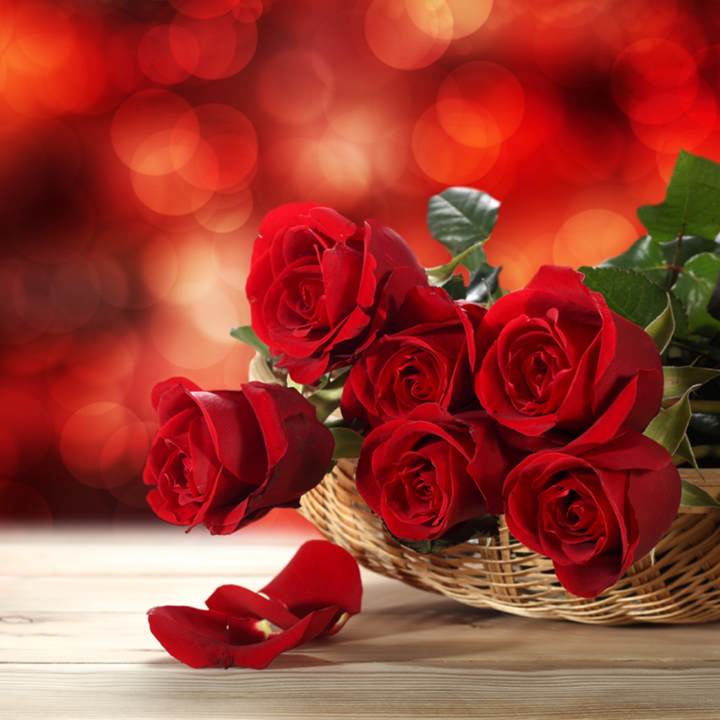
Valentine’s Day is celebrated around the world every year on February the 14th and is a time when those in love display their feelings through gifts, dates, and flowers.
The history of Valentine’s Day
Valentine’s Day began many years ago and is thought to have come about due to Saint Valentine of Rome. Saint Valentine was imprisoned in Rome for illegally marrying soldiers to their loves despite the fact they were forbidden to marry by the state. The Roman Emperor believed that once married, men made terrible soldiers and as a result put a ban on marriage.
According to the legend, Saint Valentine healed his jailer’s blind daughter during his imprisonment. It is thought that just before Valentine’s execution he wrote her a farewell letter and signed it with ‘Your Valentine’. As a result, the Roman Saint Valentine is celebrated once a year due to his firm belief in love.
Valentine’s Day was first celebrated as it is today – as a day of romantic love in the High Middle Ages by the famous Geoffrey Chaucer. It was during this time that courtly love was extremely common and everyone wanted to be involved. From the 18th century, the day flourished and soon became one whereby lovers would celebrate their love for one another by presenting flowers and gifts.
Whilst during the 18th century all Valentine’s Day cards were handmade and written – now they have become mass produced as a Hallmark holiday. In fact since the 19th century, just under half the UK population spend money on cards to give to their loved one on this day and around £1.3 billion is spent on cards, flowers , and chocolates on the 14th of February. Since the 20th century, jewelers have also begun promoting Valentine’s Day in a plight to enhance profits and sales.
Whilst Valentine’s Day has significantly changed over the years, the gift of flowers has and will continue to remain as a popular tradition. However, choosing the right flowers for your loved one on Valentine’s Day can be difficult due to the vast amount of flowers readily available in florists.
Tulips
Tulips are an extremely popular flower all year long, but add a hint of something special when given on Valentine’s Day. Tulips have fascinated people for many years due to their heritage and meaning. Unsurprisingly each colour represents a different meaning ensuring the flower is perfect for all occasions.
·Red– red is the colour of love when it comes to tulips, just as it is in many flowers. Red tulips also stand for ‘believe in love’ so make the perfect Valentine’s Day flower.
·White – this symbolises purity, innocence and humility.
·Cream – this is another favourite for Valentine’s Day as it means ‘I will love you forever’.
·Yellow– yellow symbolises friendship and happiness.
·Orange – these are often used to represent a mutual connection between two people.
·Purple – this represents royalty and nobility.
·Pink – this represents happiness and good wishes so ideal for a friend.
If you would like to use multiple colours of tulips based on their meanings, a multi-colored bouquet can also work really well this Valentine’s Day.
Carnations
Carnations have been around for over 2,000 years and have become a favourite for many women around the year. Carnations were originally used during Greek ceremonial crowns until they became popular around the world – especially in the UK. This flower comes in a range of colours and just like the tulip; each colour has a different meaning.
·Pink – means ‘I’ll always be there for you’.
·Red – means ‘my heart aches for you’
·Purple – means capriciousness.
·White – means sweet and lovely – purity.
·Yellow – means disappointment and rejection (not ideal for Valentine’s Day!).
Whilst the carnation itself is known for its meaning of health and vitality it also means fascination and love. As a result, the red and pink carnations are perfect for this Valentine’s Day.
Roses
For many, Valentine’s Day wouldn’t be complete without a bouquet of roses. All flowers have deep meaning but the rose stands alone in its abundance of history and colour. The rose has been used for many years to convey unspoken messages and was often thought of as the flower of confidentiality. Despite this, due to their delicate scent and beautiful looks, they have become the most popular flower.
However, each colour of the rose has a different meaning.
·Red – we are all aware of what the red rose symbolizes – a deep love and Valentine’s Day wouldn’t be the same without it.
·White – this represents humility and innocence and as a result, is often thought of as the bridal flower.
·Yellow – whilst in the past the yellow rose symbolized jealousy, it now represents friendship.
·Pink – this symbolizes femininity and gentleness.
·Orange – due to the bright colour, the orange rose symbolizes enthusiasm and desire.
·Lilac and purple – these colours represent enchantment and desire.
With these three types of flowers available, with a wide range of colours and meanings, choosing the right flowers to send your loved one this Valentine’s Day won’t be difficult. Make your Valentine’s Day special this year with the perfect flower communicating your words of love for you.